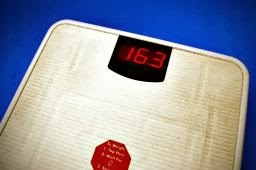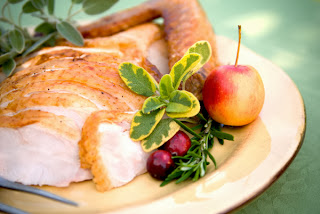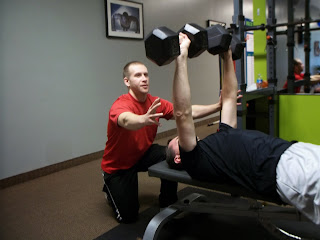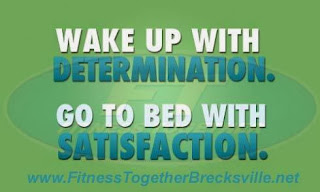Working Through a Weight Loss Plateau
As you celebrated Thanksgiving yesterday and share your gratitude for the fitness gains you've made throughout the year and the opportunities you still have to establish a healthier lifestyle, it can be hard to keep your thoughts on a positive note if you find yourself stuck in a weight loss plateau.When you stop progressing toward your weight loss goals and reach a plateau, you have one of two ways to approach this detour. You can consider a plateau to be a major roadblock to meeting your desired health and fitness goals or you can accept it as the next stage in your weight loss journey. Either way, it’s not time to throw in the towel. It’s time to get to work mixing up your routine so you can get back on course toward achieving your desired results.
Accept the Inevitable
Weight loss plateaus will inevitably happen at some point in your fitness journey. But they don’t signal the end of the road. These bumps in your route are just indicators that you may need to change up the direction on how you’re approaching your nutrition and fitness regimen. When you weigh more, your metabolism is higher because it takes more energy and you burn more calories just by moving during your daily activities. When you start to weigh less, your metabolism naturally decreases and you can hit a plateau if you maintain the same calorie intake and exercise program as you did when you started losing weight.
“Just about everyone on a weight loss program will reach a plateau,” explains Billy Pratt, personal trainer and studio owner at Fitness Together Avon. “The main reason for this is because people keep the same habits, but their body is changing. If you don’t adjust your fitness and nutrition habits as you lose weight then your energy balance starts to even out and you stop seeing results.”
Bring in the Re-Adjustments
The key to working through a weight loss plateau is to acknowledge that the slowdown is to be expected, but to not become discouraged, give up or lose sight of your overall weight loss goals. Instead, create a plan to re-adjust your fitness and nutrition strategies to overcome any plateaus that may be on the horizon.
“If you want to create change, you have to make change happen,” advises Pratt. “If change stops, you need to adjust what you’re doing. Nine times out of 10, when you reach a plateau you’re going to need to increase your activity and decrease your calories to get it started again. You don’t want to divorce the two.”
If you don’t know which way to turn to get the change you desire, it’s OK to ask for help. Sitting down with a fitness and nutrition professional to evaluate where you’re at, what you’re doing and where you want to go may be just what you need to get started again toward accomplishing your ultimate goals.
“I always tell my clients that weight loss is the easy part,” explains Pratt. “Weight maintenance is the hard part because people can get complacent.”
Celebrate the Reason for the Season
As we embark on the season of celebration and rejoicing, it is important to realize that plateaus may not necessarily be a negative thing. In actuality, plateaus can be a sign of real progress. Your body is getting stronger and you’re getting closer to your body’s full potential. Reaching a plateau also can mean that you’ve accomplished your first round of adopting a healthy and fit lifestyle. Now, your body is just telling you to prepare for round two by rolling out adapted exercises and eating habits to better suit the new you.
“Plateaus can be your body’s way of congratulating you,” Pratt says. “They shouldn’t get you down. You should really celebrate it because it means you’ve made progress.”
Plateaus ultimately give you the opportunity to take pause, appreciate where you’ve come from and prepare for your final destination. When you’re ready to work through a plateau, it’s important to re-evaluate your mental game, re-adjust your exercise routine and revamp your nutrition habits. You will be happier with your results if you focus on taking this type of holistic approach.
© 2013 Fitness Together, Inc. All Rights
Reserved. Powered by Fusionbox.
About | Contact
| Franchise
| Suppliers | History
| Leadership
| Nutrition Together
| Sitemap
| Privacy Policy | Terms of Use | Facebook
| YouTube | Twitter | Linkedin









